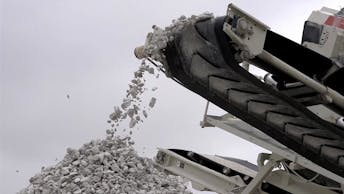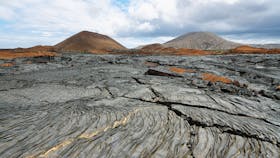We use more than we produce
Are you familiar with World Overshoot Day?
This is the day that occurs around the middle of the calendar year that marks our usage of more resources than the Earth can produce. A very tangiable illustration of the growing awareness surrounding our common need for sustainable resource use. So where do stones and stone wool insulation products fit within this reality for our planet?
Our planet replenishes its rock rapidly
The primary raw materials for stone wool is typically crustal rocks such as basalt, diabas and gabbro. So is it sustainable to use these rocks and turn them into insulation? Geologists say yes.
The rocks that are turned into stone wool are just a tiny percentage of the actual rock that is made every year from the Earth’s natural activity.
Thanks to a plethora of volcanic and oceanic activity, which can be likened to earthquakes and tectonic movement, our planet produces 38,000 more rock every year than the materials used to construct stone wool.
Stone wool production technology has changed profoundly since its beginning - to allow the usage of waste from other industries as alternative raw materials. Valuable waste is repurposed from the likes of the aluminium industry, power plants, and municipal wastewater treatment. And then, there is the fact that stone wool is fully recyclable. In fact, stone wool can be recycled again and again without degrading its quality. More and more old products can be taken back each year in order to set up more and more stone wool recycling schemes. This also reduces the amount of stone that it is used in the process.
So there is no cause for concern about the insulation industry overshooting our use of stone, when it comes to making stone wool. So far so good. That said, all resource extraction and production does have negative environmental impacts, and that means that we all have a responsibility to minimise this impact as much as possible. Today, ROCKWOOL has high standards of safety, health and environment at all our production plants and will continuously strive to raise these standards over time. ROCKWOOL has set ambitious sustainability goals - to drive improvements in our sustainability performance.
A final important fact is that insulation saves energy and money for people. In this way, it actually saves fossil fuel and CO2 for everyone. Actually, the energy saved over the lifetime of our stone wool insulation used in buildings is 100 times greater than the energy used to produce it.
Sign up to receive our insights
Let us help you stay knowledgeable and up-to-date within the world of urban planning, climate change, health and much more.
Sign up





